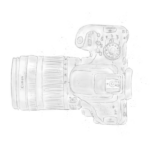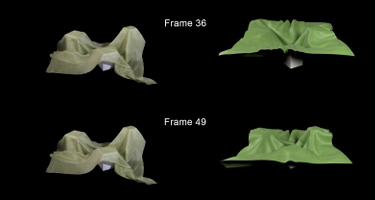Schlagwort: Forschung
Projektzeitraum: November 2021 – Juli 2022
Ausgeführt zum Zweck der Erlangung des akademischen Grades Bachelor of Science in Engineering am Bachelorstudiengang Medientechnik an der Fachhochschule St. Pölten
Betreuer: Dipl.-Ing. (FH) Martin Schinzel MA
Abstract:
This thesis concerns the creation of realistic cloth simulations in Autodesk Maya nCloth. First, different cloth modelling techniques are mentioned, and physically based cloth simulation methods, with a focus on the Mass-Spring model, are introduced. Then, the principles behind cloth simulation, like numerical integration or collision detection, are explained. In two experiments the drape of woven cotton and silk fabric onto different cuboids was filmed in real-life and later recreated using Autodesk Maya nCloth. Relevant nCloth parameters concerning collisions and dynamic properties are discussed. The simulations created for this work and the results of an expert evaluation comparing these simulations to real-life footage show, that creating realistic cloth simulations with Autodesk Maya nCloth is possible, but taxing, time-consuming, and not advisable for big projects or high mesh resolutions.
Keywords: cloth simulation, physically-based cloth simulation, Mass-Spring model, numerical integration methods, collision detection, Autodesk Maya nCloth, nCloth parameters, cloth texturing
Kurzfassung:
Diese Arbeit befasst sich mit der Erstellung realistischer Stoffsimulationen in Autodesk Maya nCloth. Zuerst werden Stoff-Modelierungs-Techniken erwähnt und physikalisch-basierende Stoffsimulations Methoden mit dem Masse-Feder Model im Fokus vorgestellt. Danach werden die Prinzipien hinter Stoffsimulation wie numerische Integration oder Zusammenstoßerkennung erklärt. In zwei Experimenten wird das Herunterfallen von gewebtem Baumwollstoff und Seide auf unterschiedliche Quader in der Realität gefilmt und dann mit Autodesk Maya nCloth im 3D Raum nachgebaut. Weiters werden relevante nCloth Parameter bezüglich Collisions und Dynamic Properties besprochen. Die in der Arbeit geschaffenen Simulationen und die Bewertung dieser von Stoffsimulations Experten im Vergleich zu den echten Aufnahmen zeigen, dass realistische Stoffsimulation in Autodesk Maya nCloth möglich, aber anstrengend, zeitaufwendig und nicht für große Projekte oder hohe Mesh-Auflösungen zu empfehlen ist.
Schlüsselwörter: Stoffsimulation, physikalisch-basierende Stoffsimulation, Masse-Feder Model, numerische Integrations-Methoden, Stoff-Texturierung, Zusammenstoßerkennung, Autodesk Maya nCloth, nCloth Parameter

